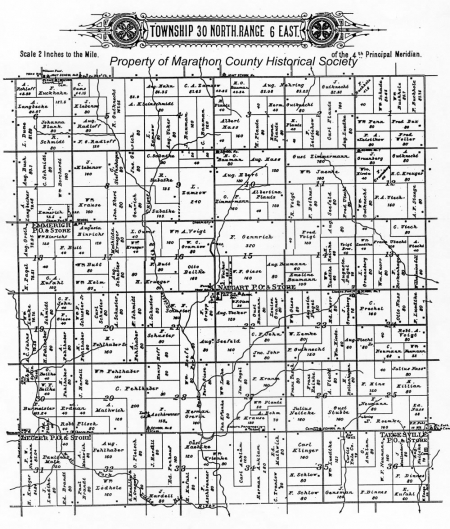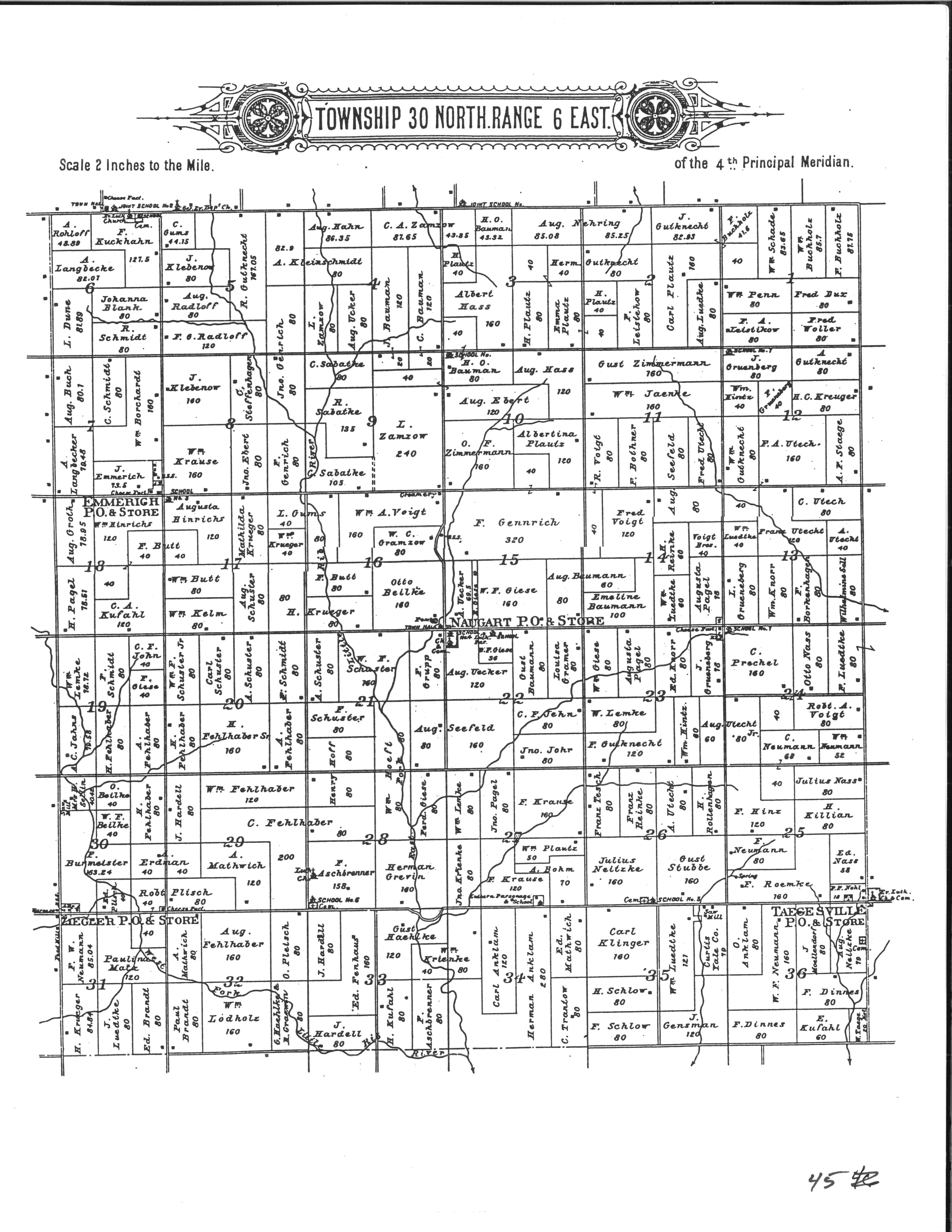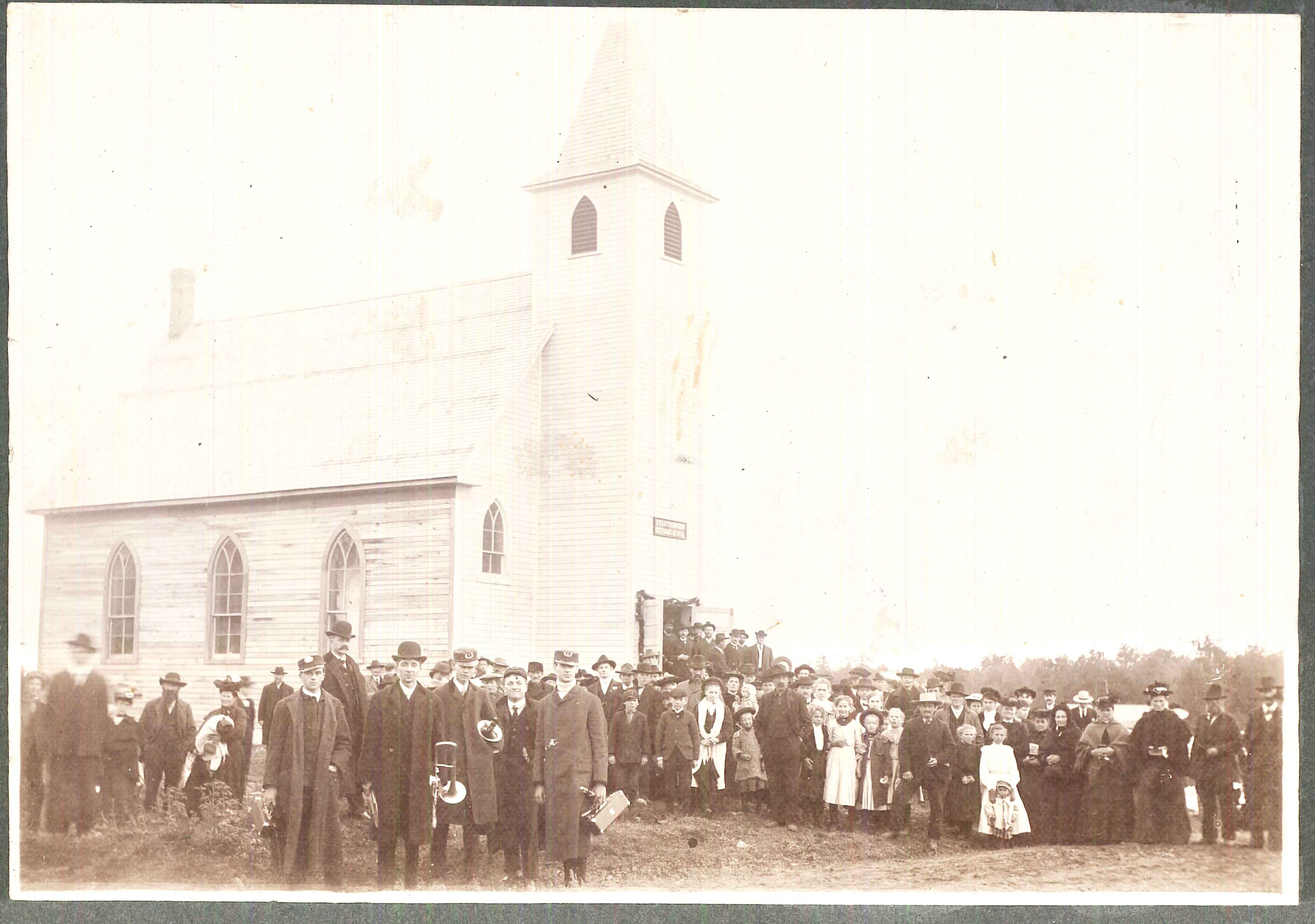Search our Places Database
Berlin, Township of
Return To List of Locations | Back to Search
For more information on this location, please contact our research library.

Author:
Mary Moltzan
Location:
T. 30 N. - R. 6 E.
Formallized:
February 12, 1859
Background:
Population: 1905 -1,019; 2000 - 887.
Originally all of T. 30 west of the Wisconsin River, it achieved its present size December 29, 1886. It was inhabited by Chippewa Indians until lumbermen arrived.
The oldest real farm settlements were made by German farmers. The first farmer immigrants seemed to have been the William Thiele family. Some other early settlers were Fred and Ernestina Lemke, William and Carlena Baumann, and Gottlieb and Augusta Zimmerman.
First Public Official:
William Drost
Biography:
Chairman
Post Office Established:
October 18, 1866
First Postmaster:
August W. Schmidt
About The Post Office:
Naugart located SW 1/4 Section 15 was discontinued August 31, 1940 with service from Hamburg.
Emmerich located SW 1/4 Section 18 was established December 6, 1890 with Anton Emmerich as postmaster. The P.O. was discontinued May 15, 1905 with service from Naugart.
Ziegler located NW 1/4 Section 31 was established October 6, 1891 with Frank Gere as postmaster. The P.O. was discontinued March 31, 1905 with service from Marathon.
Churches:
1. Naugart Lutheran Church, Section 22 - organized March 11, 1861.
2.German Evangelical Lutheran Trinity Church - organized March 16, 1868 in Section 28, one mile east of Little Chicago.
3. German Evangelical Lutheran Church - location Section 6.
4. M. A. Methodist Church - Between 1859 and 1874, this church site was located in Berlin Township.
Schools:
1. District #1, Adams School, Section 24
2. District #2, Madison School, Section 10
3. District #3, Monroe School, Section 17
4. District #4, Naugart School, Section 22
5. District #5, Stubbs School, Section 26
6. District #6, Grand View School, Section 29
7. District #7, Jackson School, Section 12
Business:
Frederick Michael Gramzow owned a blacksmith shop located in Section 16.
Anton Emmerich, some time after 1872, started a shoemaker shop. In time, as business prospered, he added a tavern and store.
In 1885, Albert Bothner built a blacksmith shop at the intersection of Hwy. 107 and County Trunk A, Little Chicago. Through time, the property had various owners. In 1945, it was sold to Brickner and Michaels. In 1948, Brickner bought out Michaels and Brickner Motors was founded.
Another early blacksmith shop, located in Section 7, was owned by William Rollenhagen.
F. P. Nohl ran a blacksmith shop in Section 25.
Frederick S. Fenhaus operated a blacksmith shop in Section 28 in 1890.
Another business was W. F. Beilke's Store in Little Chicago.
Industry:
Lumbering, sawmills, cheese factories, feed mill, and a creamery
The first sawmill was built by Henry Sellin in 1872. Before 1900, Curtis and Yale Company operated a saw mill in Section 35.
One of the first cheese factories was built by August Taege in the late 1890's. William A. Voigt built a creamery c1902 in Section 16 and operated it 11 years until it was sold.
In 1913, operations were begun with the feed grinding mill owned by Emil Schuster.
Several attempts to mine iron ore were made in the early 1900s. Insufficient deposits discouraged profitable mining.
See Little Chicago
Farming:
Log barns, with a preference for using oak, could be built quickly. They were typical of the first farms built by German immigrants during the 1860s and 1870s. The German immigrants' preference for using oak in their log buildings often resulted in the logs of the original barn being incorporated into later structures.
Farming began to flourish in the 1870s as forests were depleted. Wheat, barley, and oats were some of the first crops grown . Oats were grown to feed the growing population of horses due to the oxen being replaced. Farmers also soon saw that feeding grain to dairy cattle would increase the milk production which was in demand from the growing number of cheese factories in the county.
Stories:
When an early pioneer or settler died, he was laid to rest in a pine box and put into the ground without religious burial service. As time passed, churches were built and cemeteries were established. Before the existance of the automobile, when death occurred, the mortician would embalm the body at the home and the body would lie in state in the home for viewing for several days until the service in the church. Earlier, before embalming fluid was used, a metal container filled with ice was placed beneath the body; consequently, funeral services were conducted much sooner.



